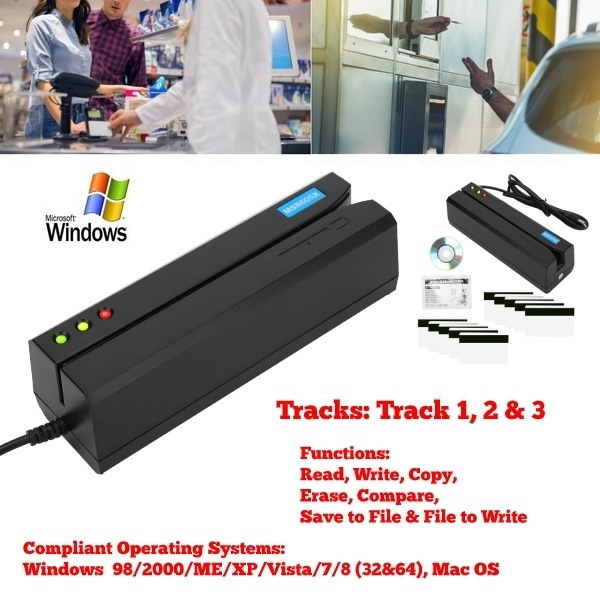
They need to transmit at much smaller ranges and don’t need to transmit large data packets, so they consume energy at a lower rate. A by-product of these engineering differences is that even the active readers require less power. All common applications, including access tokens, contactless payment, and transit cards, are merely transmitting strings of plain-text characters, which requires very small amounts of bytes (units of memory).
Bank card reader and writer Bluetooth#
As previously mentioned, the data packets are smaller than Bluetooth ones, but for the vast majority of applications of NFC, the size is more than sufficient. Given that NFC technology assumes that the devices are in very close proximity to each other, the connection is established much more rapidly and the data packets can be transmitted more quickly. This relates to the second advantage that NFC devices have: Speed of communication. access cards) can be mere passive groupings of wires and circuits that just emit a signal when prompted to do so. door readers) does the task of inducing the current, and the NFC tokens (e.g. That would be an incredible hassle! Instead, clever engineering makes it so the active devices (e.g. Imagine if you had to charge all of your keycards every day.

The first main advantage of NFC is that passive devices, as described above, don’t actually need any power source-this makes carrying and using NFC tokens much easier.

The main advantage that NFC has over Bluetooth, though-and the reason why it only works in close proximity-is that NFC devices are split up into active and passive devices, whereas all Bluetooth devices are necessarily active. So why do we need a different standard? Why use NFC over Bluetooth? NFC actually requires very close proximity, whereas Bluetooth devices can be much farther apart (Bluetooth can be accurate up to dozens of feet away depending on the strength of the signal) and Bluetooth devices can transmit much larger packets of data-in the megabyte range rather than the kilobyte range for NFC. Hang on, that phrase sounds familiar no? That’s exactly what Bluetooth has been doing for years and years. NFC devices transmit parcels of data via radio frequencies to other NFC devices.

This all happens behind-the-scenes and instantaneously (depending on the strength of the WiFi signal) guarantees the end user a seamless experience. The server will then authenticate the request and prompt the reader to perform some relevant action, be it unlocking a door, communicating with a bank server, unlocking a subway turnstile, etc. Most readers only cache a small amount of information and have a method of communicating with the primary server-since storing all the relevant user info on a reader would be impractical, insecure, and would result in too bulky a product. Signal Relaying Back to the ServerĪfter the reader reads the ID, based on the use case, the reader will then communicate this information back to the host server over local network or WiFi.

Bank card reader and writer update#
Depending on what type of token it is, the nature of this string will change: If it’s a simple ID reader, then the string is a unique identifier for the user if it’s a transit card then it’s an ID, but on the back end the reader needs to record the charge and update its server, and if it’s a contactless payment card, then it’s an ID with many added layers of encryption and security to protect the user’s bank information (in this case, only a dedicated and approved reader could decrypt the information relevant to the bank details, any other reader would only be able to read a simple ID string). The NFC reader induces a magnetic current in the token and, in turn, the token transmits the relevant string of characters.


 0 kommentar(er)
0 kommentar(er)
